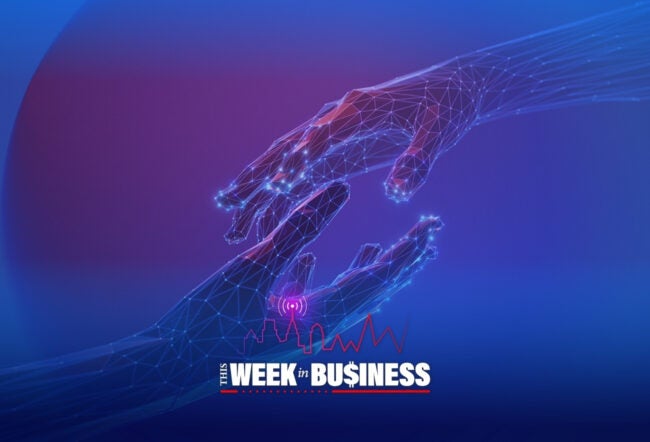A recent government report shows that despite their growing presence in science, technology, engineering and math (STEM) disciplines, women are largely absent on patents. A “patent new deal” for female inventors could help turn the tide, writes Ami Patel Shah in this opinion piece. Shah is a partner in a global, patent-focused hedge fund and holds degrees in law, and electrical and computer engineering. She is a global speaker on patent issues, particularly at the intersection of patents and finance. Prior to her financial services career, Shah ran the global wireless patent portfolio of an international chip manufacturer, worked at various law firms and started her career as a United States Patent Examiner.
As dyed-in-the wool STEM professional women of all stripes know, much to our surprise a funny thing’s been happening on the way to the patent office: Women are going missing as inventors. According to a February report by the U.S. Patent and Trademark Office (PTO), women are today’s “lost Einsteins.” Indeed, one of the report’s findings is particularly damning: “Gains in female participation in science and engineering occupations and entrepreneurship are not leading to broad increases in female patent inventors (emphasis added).”
With so much recent progress in STEM, how can women still be the Hidden Figures of the patent office?
After all, the situation has already begun to change in the C-Suite. Five years ago, Forbes reported that “women who STEM-ed their way to power” were shattering glass ceilings at companies such as IBM, GM, PepsiCo, DuPont, HP and Yahoo! by majoring in “seriously hard sciences.” Yet while we’ve made great progress in gaining access to the executive suite, we are not STEMing our way to patents. Houston, we have a problem.
The same situation prevails in Seoul, Shanghai and Bangalore. A recent CNBC survey of 12,000 women developers across 100 countries reported Shanghai and Bangalore to be the world’s leading emerging technology hubs for women that will soon surpass Silicon Valley. Moreover, according to the World Intellectual Property Organization, Asian-based innovators – specifically China, South Korea and India — now dominate patent filings globally. What’s more, these Asian countries file counterpart patents significantly in the U.S., which renders the PTO report a proxy for international patenting. This makes our “lost Einstein” problem a global one.
“The solution needs to include women as a rich, robust and diverse source of innovators. In short, we need a ‘New Deal’ for female inventors.”
In the U.S., both houses of Congress jumped into the mix holding hearings this past month on the dearth of female inventors and its impact on America’s “Innovation Economy.” Still, meaningful and sustainable change can be realized only by examining the public/private sector’s so-called patent bargain incentivizing patent filings and the root causes leading to the suppression of female inventorship. From there, a fix allowing technology to benefit and society to advance can be constructed. The solution needs to include women as a rich, robust and diverse source of innovators. In short, we need a “New Deal” for female inventors.
What’s the Deal with Patents?
Disclosure for exclusivity – that is the bargain at the heart of any patent system. Patents drive economic growth by granting a limited monopoly right in exchange for disclosing the underlying invention. Disclosure of the invention occurs right now, creating immediate transparency so patents can be read, understood and improved upon by others for society as a whole to advance.
In an innovation economy like the U.S., intellectual property has been estimated to comprise a whopping 87% of intangible assets on corporate balance sheets. Thus, women who “STEM” their way to the executive suite yield considerable economic power with their company’s patents. But why is the current “disclosure for exclusivity” deal leaving women behind? The answer lies at the heart of why the invention demand and supply equation is not working for women.
Exclusivity/Demand Side
Viewed in economic terms, exclusivity is effectively the demand side of the societal bargain and it drives what types of patents will be granted. Think of this as demand pull, or what can I expect to get a legal monopoly on? It turns out that has been a huge unknown that appears to be disproportionately affecting women.
A battle for the soul of the patent system has been raging between so-called seriously hard science – say, chip architecture — and softer sciences such as biotechnology as to what is truly patent-worthy. In theory (and as originally designed) the U.S. system boasts a particularly broad, unitary system. In other words, it provides a single system for patents whether the invention is a new diagnostic procedure, a smart phone or an app.
But, in reality, a large question mark has hovered over computer software and to a larger extent all information-based technologies, including AI, data science and biotechnology as to whether these disciplines are patent-worthy. Indeed, unclear legal precedent and inconsistent application of it has created an Orwellian-style dynamic in the patent office where some inventions are treated as more equal than others. And that has had an effect in the patent after-market. I price patents for a living and have witnessed first-hand the steep discounting applied to innovations in “soft science” compared to their so-called “seriously hard science” cousins.
Encouragingly, however, the exclusivity side of the equation just got better. New U.S. Patent and Trademark Office (USPTO) director Andre Inacu has declared an end to the era of distorted legal conclusions concerning patent eligibility and has deployed substantial agency resources to correct the problem. Revised examination guidelines now make clear that the door to the USPTO is both wider and more welcoming to soft science inventions. This is good news for girls who code because we are just as inventive as guys who design chips.
Disclosure/Supply Side
Turning to the disclosure side of the bargain, a bigger tent for all technologies at the patent office should mean a larger pool of potential female applicants from which to draw. Fortunately, data from both bottom-up (that is, female educational degree candidates) and top-down (that is, women-led business) studies show that, on both fronts, we exist as innovators in considerable numbers.
Education
From a bottom-up perspective – namely, higher educational degrees to be earned by women as a potential pool of patent applicants — this is where the girls are. A 2016 National Girls Collaborative Project study showed that while women make up half of the total U.S. college-educated workforce, they comprise only 29% of the science and engineering workforce. In terms of pure STEM (and excluding the software debate, for now) this is not a strong showing. However, the same study shows that when you look at the numbers for women degree candidates in the “softer sciences” such as social sciences (62%) and biological, agricultural, and environmental life sciences (48%), that number expands appreciably. And therein lies a rich pool of potential female inventors.
But academia teaches otherwise. In all our collective years of STEM study, not once have we been exposed to a lecture on patenting. In computer science, software patenting is all but verboten. Open-source software is mightily preferred and nary a word is spoken about patents unless it’s to say that they stifle innovation. To those who would argue that softer science leads to fuzzy inventions and creates a drag on economic growth, we would say, look no further than at the disparate impact being wreaked on female would-be inventors. Education needs to be re-educated, especially when it comes to the softer sciences about the patent system and the societal benefits they are intended to provide.
“A Patent New Deal fashioned can provide the impetus for women to assume their rightful place as inventors, driving both cultural and economic change through the power of patents.”
Business
From a top-down standpoint, by which I mean women-led tech businesses, consider the following:
- A 2016 Kauffman Foundation study found that women-led tech companies are both more capital-efficient and achieve higher returns on investment than firms led by men to the tune of 35%.
- A Forbes report found that women tech entrepreneurs are able to generate 20% greater revenue than their male counterparts even though they receive 50% less overall venture funding.
Moreover, we have seen that investors greatly influence start-up behavior and typically require starts-ups to file for patents to protect their investment. The question becomes then, from the top down, how to financially incentivize these well-run, efficient women-led tech companies and their investors to patent? That question is no different than the bottom-up question of how to get the larger pool of both soft and hard science degree holders to patent?
Based on these factors, the contours of a new disclosure for exclusivity deal can begin to take shape to boost female inventorship. Helpfully, current governmental programs exist (known in the small business and procurement arena as “Section 8A”). These can, and should, be modified to fashion a New Deal for women inventors.
Features of a Patent New Deal
If we are serious about correcting the gross imbalance described above and encouraging more women to become patent holders, the Patent New Deal needs to include these features:
- Leverage and expand existing incentives to include women. Federal minority-owned businesses programs currently exist which include women in the ranks of minority ownership. These programs generally provide incentives for federal contractual procurement – so why not patent procurement? Patents are assets of companies, so they can be similarly incentivized in the same manner as real economy goods and services.
- Federal tax incentives. As far back as 1953, the Small Business Act encouraged the use of minority-owned and female-owned companies in federal contract opportunities. The amount and type of federal tax benefits given to businesses could be made available for businesses that use, or investors who invest in, minority and women-owned businesses that file patents.
- Patent Office incentives. The patent office currently has a graduated and reduced fee schedule for small entities and micro-entities to defray the costs of patenting. Why should this benefit not be extended for women-owned entities in the manner that has been available for contractual procurement under Federal law ?
- Educational incentives. Leveraging off the increase in degrees (both STEM and non-STEM), loan forgiveness could be provided as an incentive to come to the patent office, rewarding women who use their degrees to invent.
In short, there should be no daylight between incentives extended to women under federal contractual procurement programs and for them to procure patents. This should be the heart of the New Deal. We need to extend a bevy of effective, well-thought-out incentives to women who take the lead on innovation, benefits directed both to the supply side of a greater pool of potential women inventors and to the demand side of soft and hard tech patenting harnessed to drive the innovation economy.
The PTO Report and recent Congressional hearings are the perfect jumping-off point to recalibrate the bargain at the heart of our patent system. That will help drive innovation at a time when women exist in considerable numbers as degree holders, in the workforce and in launching new businesses. A Patent New Deal fashioned can provide the impetus for women to assume their rightful place as inventors, driving both cultural and economic change through the power of patents. The patent office study is to be applauded for drawing attention to the issue. It is now up to us to take action and make the New Deal a reality.
And not to quibble but, really girls, rather than “lost Einsteins,” wouldn’t we rather be “found Madam Curies?”



